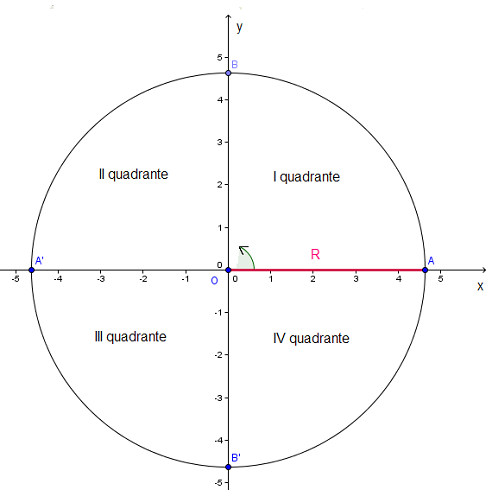The circumference of a circle:
Circumference (from Latin circumferentia, meaning "carrying around") is the linear distance around the edge of a closed curve or circular object.The circumference of a circle is of special importance in geometry and trigonometry. Informally "circumference" may also refer to the edge itself rather than to the length of the edge. Circumference is a special case of perimeter: the perimeter is the length around any closed figure, but conventionally "perimeter" is typically used in reference to a polygon while "circumference" typically refers to a continuously differentiable curve.
Circle in the cartesian plane:
If we have a circle drawn in a coordinate plane, with the center in (a,b) and the radius r then we could always describe the circle with the following equation:

Therefore, if you want to draw a circle in the Cartesian plane you need to know the coordinate of the centre and the radius of the circle.
For example, if the circle is centered in the origin of the Cartesian plane a=0 and b=0, and we get:

FOR DETAILS CLICK HERE
A line that intersects a circle in exactly one point is called a tangent and the point where the intersection occurs is called the point of tangency. The tangent is always perpendicular to the radius drawn to the point of tangency.

A secant is a line that intersects a circle in exactly two points.
When a tangent and a secant, two secants, or two tangents intersect outside a circle then the measure of the angle formed is one-half the positive difference of the measures of the intercepted arcs.


When two chords intersect inside a circle, then the measures of the segments of each chord multiplied with each other is equal to the product from the other chord:


If two secants are drawn to a circle from one exterior point, then the product of the external segment and the total length of each secant are equal:


If one secant and one tangent are drawn to a circle from one exterior point, then the square of the length of the tangent is equal to the product of the external secant segment and the total length of the secant:

